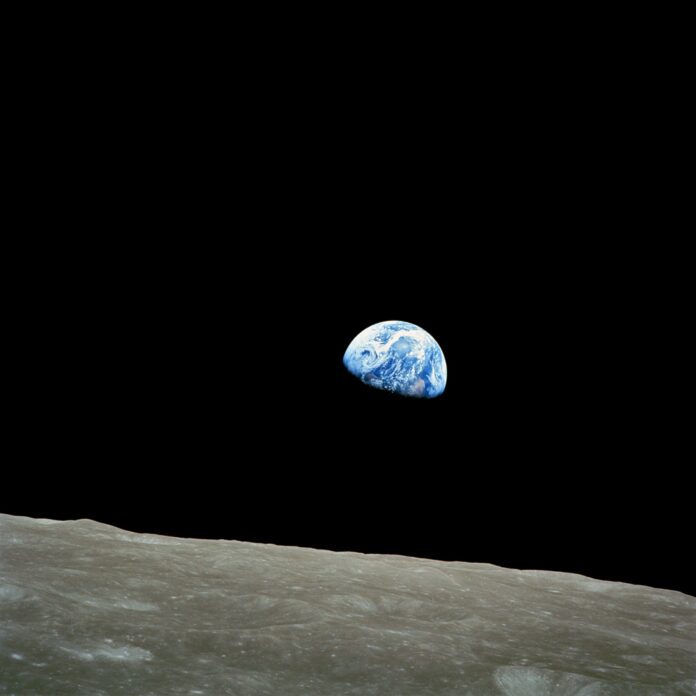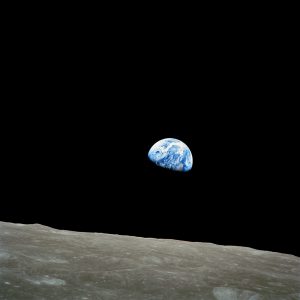
BY HARRY WEEKES

Sometimes, observations come from solitary events. Other times, I need an accumulation of things to create a seed or some kind of mental nugget that amounts to an observation. In this accumulation version, the various circles of my life overlap in a Venn diagram and something emerges.
The circles in this case, the events, come from Buckminster Fuller, Dersu the Trapper, the polar vortex, Earthrise, and snow fleas.
As anyone who paid any attention to the national weather at the end of January knows, the polar vortex (other than one of the coolest names in weather history) was that cold hand of Mr. Snow Miser reaching out to plunge the Midwest into an example of what the world would look like without heat (sorry, Heat Miser).
We got images of people’s hair frozen into stiff branches, hot water evaporating as it was thrown into the air, and frozen waterfalls of beer being poured into glasses. Beneath all of this was an unspoken reality—this is a world in which humans cannot live long.
Dersu the Trapper is the tale of V.K. Arseniev, a Russian naturalist, and his various expeditions exploring the Siberian Far East at the beginning of the 1900s. Dersu Uzala is a native Arseniev meets along the way, with Dersu an example of a bygone era—someone almost completely attuned to the rhythms and complexity of nature because he lived wholly in it. Polar vortex? Bring on Dersu.
“Earthrise” is the name of the iconic photo of Earth taken from space that Bill Anders shot as Apollo 8 orbited the moon on Christmas Eve 1968. Being that last year was the 50th anniversary of that event, this image made a brief resurgence, reminding us now, as it did then, that we all share one small planet, and it looks pretty fragile from space.
The snow fleas were that natural bonus that seemed to belie “Earthrise’s” fragility and counter polar vortex fears. Snow fleas are these astonishing little insects, deep bluish-purple, that are measured in parts of millimeters, that produce an internal antifreeze that enables them to be active and bouncing around, as they were in the snow in early February.
And, finally, Bucky. To paraphrase, he said, “only moments earlier a person was powerfully rich, and now (they are) desperately helpless.” This was in the context of rapidly evolving technology.
And that technological train is something we jumped on and have ridden almost without pause or thought (think Arseniev, literally, and our trip to the moon as examples of riding this technology). But what have we left behind? What have we lost? When I think of Dersu, of the snow flea, of the Earth from space, I have this sense that we have lost and are losing something essential and replacing it with a kind of false and frail richness.
But the natural world invariably presents something to me, whether in individual observations or ones that emerge from aggregation. This something is an antidote to a certain existential helplessness I feel. This antidote begins with slowing down. Being patient. Paying attention. Then, it is letting a sense of awe and wonder emerge. And although I feel small, somehow, I feel a lot less helpless.
Harry Weekes is the founder and head of school at The Sage School in Hailey. This is his 47th year in the Wood River Valley, where he lives with his wife Hilary and their three kids—Georgia, Penelope and Simon—a nice little flock.
